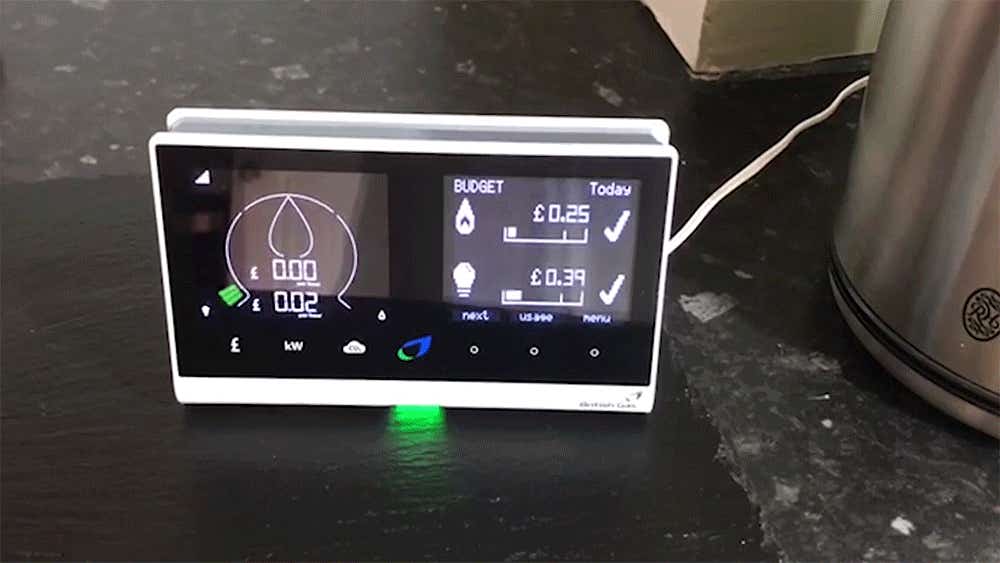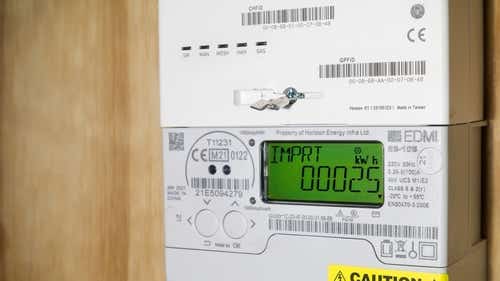- Uswitch.com>
- Gas and Electricity>
- Guides>
- The ultimate guide to smart thermostats - Uswitch
Smart thermostats explained
How do smart thermostats work?
A typical room thermostat allows you to change the temperature in your home using a dial or control panel. A smart thermostat, though, gives you more efficient and accessible control over your home’s heating.
Smart thermostats are connected to your boiler and are often controlled by an app that is downloaded to a smartphone or tablet. This allows users to adjust their heating from anywhere. If you're at home, you may also be able to connect your smart thermostat to a voice assistant like Amazon's Alexa or Google's Assistant.
This is the basic makeup of most smart thermostats. Some smart thermostats offer more, such as 'learning' your schedule by detecting when your smartphone is in the house, or even taking it a step further by detecting when you're on your usual route home, and setting your home to the desired temperature.
How much do smart thermostats cost?
Most smart thermostats cost between £100 and £200, but some will have add-ons such as installation which push the cost up. The majority of options shouldn't require professional installation, but make sure you check whether the installation is within your capabilities before purchasing.
How does a smart thermostat benefit you?
The ability to remotely control a home's temperature appeals to those with hectic schedules. For instance, if you have a late-running meeting, there's no reason to heat an empty home - or maybe you're on holiday and realise you've forgotten to turn off the heat. Smart thermostats mean that resolving any heating errors takes just a few taps on your smartphone.
Additionally, some can use your phone to track your movements and turn heating on and off automatically if it detects you're in or out.
Smart thermostats don't directly save you money in the way switching energy supplier can. However, they provide the ability to heat your home more efficiently which should save you in the long run. You will also receive reports about your usage, which can help you better understand your heating usage, and adjust your behaviour and preferences accordingly to save money.
For more ways to cut your energy usage around the home, check out our energy-saving guides.
Types of smart thermostat
There are various smart thermostats available from different manufacturers. We take a look at some of them below:
tado°
tado° had been operating in Germany and other European countries before launching in the UK in October 2013. It follows the same philosophy as Google’s Nest and seeks to adapt to users’ lifestyles and create smart homes with as little input from them as possible. It is now partnered with E.ON Next.
The device learns from users’ behaviour and tries to match your home’s temperature to your preferences, in the most energy-efficient way possible. It does this by tracking inhabitants using their smartphones.
This means that when everyone leaves the home it turns the heating off and, when it detects someone coming back from work, for example, it begins to turn the heating up. The system also takes into account weather conditions and, according to tado°’s manufacturers, can help users save up to 31% on their energy bills.
British Gas’s Hive
Unlike Google’s Nest, the Hive doesn’t want to run your heating with as little input as possible from you. The Hive Active Heating is built around a dashboard which enables users to manage their home’s temperature using a smart device.
In this context, Hive allows users to design heating schedules and alter their home’s temperature whenever they want to. The device can also automatically turn the heating on if your pipes are going to freeze due to cold temperatures.
Hive thermostats start at £119.
Google’s Nest Learning Thermostat
Nest made headlines at the start of 2014 when it was purchased by Google for about £2bn. Nest’s Learning Thermostat’s main claim to fame is that it is designed to adapt your home’s temperature to your behaviour. The Learning Thermostat starts from £219 and requires professional installation, while the Thermostat E starts from £199 and can be installed yourself.
By monitoring the user’s habits, Nest’s device is able to create a personalised "heating schedule". The hope is that, eventually, the Learning Thermostat will know so much about your habits that you’ll never have to change the temperature by hand.
The Nest Learning Thermostat also has a motion sensor, which can detect when your home is empty and doesn’t need to be heated. It also allows you to control your heating via your smartphone, tablet or desktop.
Honeywell evohome
Honeywell predominantly markets smart thermostats for radiators but does have a couple of home options available as well. The evohome has the ability to split your home into up to 12 individual heating zones.
The technology incorporates the usual array of smart thermostat features, including hot water control and remote control via smartphones or tablets.
Honeywell’s evohome is available to purchase online with prices starting at £279 for the base unit (installation not included).
Heatmiser
Launched in 2014, Heatmiser takes a build-your-own approach to smart thermostats and home heating systems.
Its equipment can do everything you'd expect it to be able to do, and will cost in the region of £200 depending on what you need.
Drayton miGenie
The miGenie comes in three versions: the Wish 1, the Wish 2 and the Wish 3, with the cheapest starting from £149.99. They have an app and a control unit which can be wall-mounted or left free-standing on a table or counter.
Read more:

Smart thermostats - how they work and how you can save
Smart thermostats let you control your home's temperature via a tablet, smartphone or desktop for greater control over your heating and your energy bills.
Learn more
When will my energy supplier install my smart meter?
All suppliers will have offered their customers smart meters for gas and electric by June 2025. Find out what the largest suppliers are currently doing and their progress towards the smart meter rollout.
Learn more
How to read your gas and electricity meters - Uswitch
Find out how to take meter readings from any type of gas or electricity meter in this Uswitch guide to reading energy meters.
Learn more
